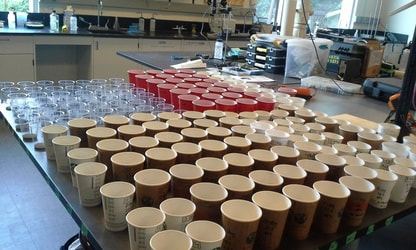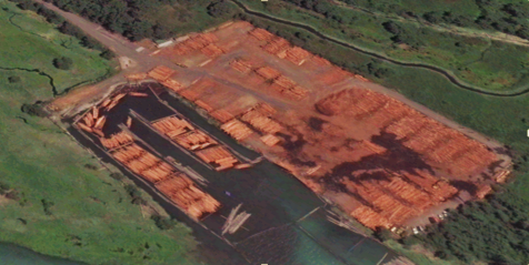|
To answer my research question, a particle size analysis was conducted on the samples using the dry sieving method.
Below is the step-by-step process used:
To access the graphs extracted from this analysis, please email me at jhanelle.williams@questu.ca
0 Comments
Upon our visit to the section of the estuary that was not affected by log sorting activities, we observed that there was a rich organic smell at the site. Perhaps this is the smell of decomposing matter which is often observed in other estuaries and wetlands. Interestingly, this is the same smell we encountered when we sampled in areas close to the tidal channel in the old log sorting site. Could this have been our first indicator that is likely that the restoration project was successful seeing that sections of the disturbed site had this rich organic smell ? At the end of our particle size analysis we would be able to further confirm this observation. In addition to the rich organic smell, there were approximately 7 Canada geese feeding and one Heron which was not observed during the sampling process in the disturbed site. This was another indication that this section of the estuary was healthy thus is good "control" site for our research.
Sampling this area was conducted using the same method as the old sorting facility. At this site the area was divided into grids and randomly sampled. We carefully traversed in this area as the soil was generally soggy. Also since the soil was sticky there was more resistance when walking so much care was taken. Nonetheless, we successfully randomly selected and sampled 4 grids out of the 6 grids !!! At the end of this field day, we had all our samples to conduct a soil particle size lab analysis which would take place at Quest University under the supervision of Dr. Rich Wildman. As an environmental science student from Jamaica, I did extensive research on degraded coral reefs along the northern coast of the island. My past experience made it easier to engage in the research at the Squamish Estuary. Working along coastal communities can be fun as there is rich biodiversity in the area. This is clearly seen newly restored site along the Squamish Estuary.
Now why are we interested in this site? The only visible feature is a cleared area old log sorting facility as seen in the photograph below. I wanted to understand the physical properties of the soil as this will shed light on factors such as particle size. This data would allow us to know whether this brown unattractive area will once again return to an area which is fully vegetated and one that we can enjoy during our evening walks.
Here is a video of the site after remediation which was filmed on February 9, 2016.
The video was filmed and edited by Jordan Ross (Quest University Student). “Healthy Oceans = Healthy Planet”
Our world oceans need to be protected from harmful pollutants that enter from industrial activities. What better place to start than with our estuaries !!! Estuaries are central for oceans as they filter suspended sediments and other particulates before such particles enter the ocean. In order to understand whether the old log sorting facility section of the Squamish Estuary will return somewhat to its initial condition, a soil particle size analysis was needed. Conducting this analysis allowed us to know the distribution of sand, silt and clay in the area. Thus being able to predict the likelihood of whether vegetation will regrow and the potential of the presence of chemical contaminants developing at the site in the event that other industrial activities occur in the surrounding area. To understand this myself and a few Quest University students ventured into the field to collect soil samples. We were fortunate to have a good weather conditions on our first day of data collection. The weather was lovely, 12 °C, in February and clear blue sky- perfect. This was a successful day as we were able to make the layout for the grid that matched the GPS as well as collect samples before the high tides came in. 10 grids on our first day of data collection were made however only 7 grids which were randomly chosen and sampled in triplicates. At the end of day 1 we had approximately 40 pounds of soil samples . Method used to collect sample were as follows.
|
Jhanelle WilliamsJhanelle is an environmental science student at Quest University with a focus on soil and water quality. She is excited to work with the Squamish Watershed Society in the estuary soils as this provides the basic understanding for the fate and transportation of contaminants in soils. Furthermore seeing that this a relatively new restoration project, understanding the physical characteristics of the soil is central for advancing in the development of the site. Stay tuned for the interesting research forthcoming! ArchivesCategories |




 RSS Feed
RSS Feed